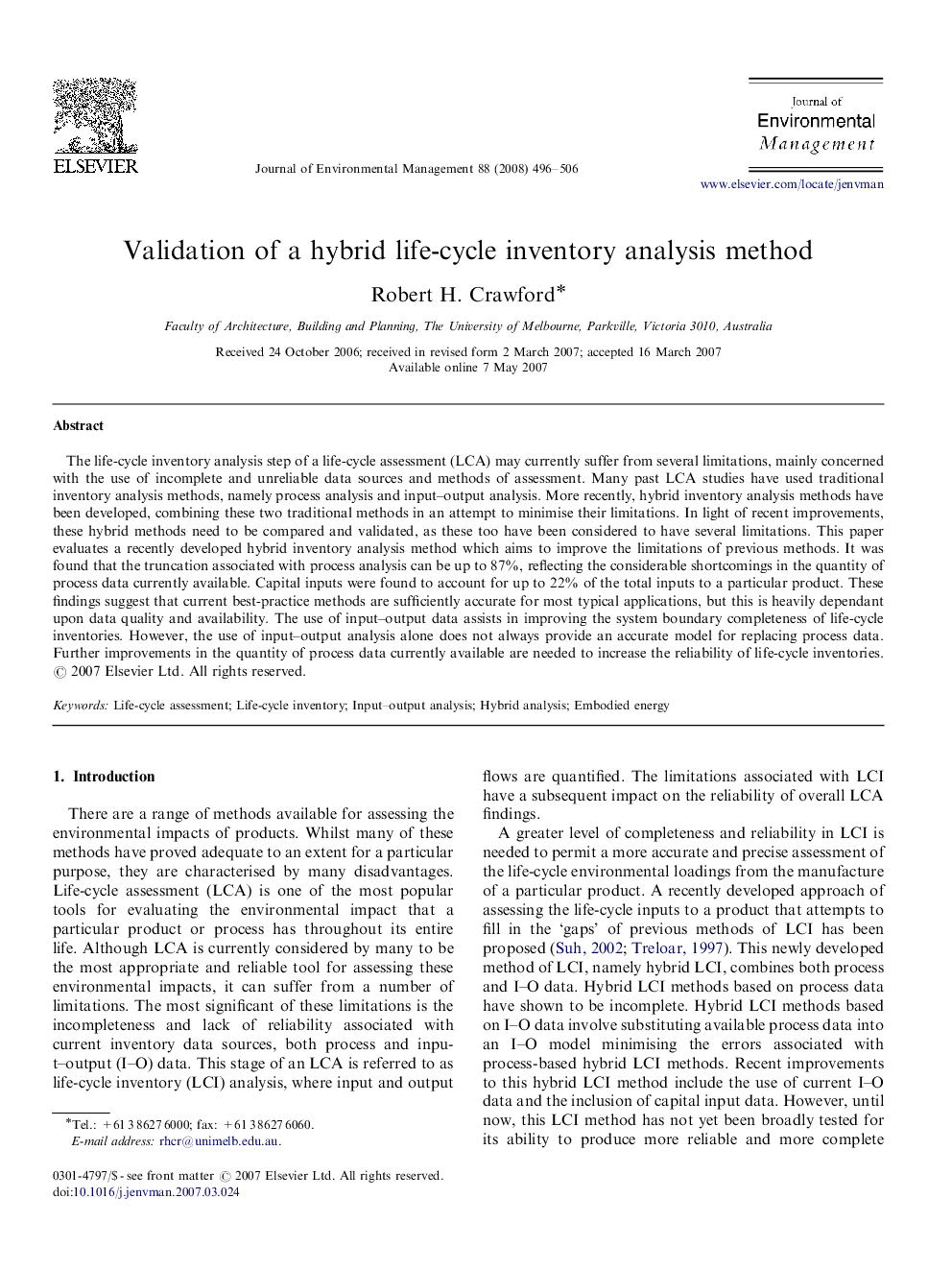| Article ID | Journal | Published Year | Pages | File Type |
|---|---|---|---|---|
| 1058628 | Journal of Environmental Management | 2008 | 11 Pages |
The life-cycle inventory analysis step of a life-cycle assessment (LCA) may currently suffer from several limitations, mainly concerned with the use of incomplete and unreliable data sources and methods of assessment. Many past LCA studies have used traditional inventory analysis methods, namely process analysis and input–output analysis. More recently, hybrid inventory analysis methods have been developed, combining these two traditional methods in an attempt to minimise their limitations. In light of recent improvements, these hybrid methods need to be compared and validated, as these too have been considered to have several limitations. This paper evaluates a recently developed hybrid inventory analysis method which aims to improve the limitations of previous methods. It was found that the truncation associated with process analysis can be up to 87%, reflecting the considerable shortcomings in the quantity of process data currently available. Capital inputs were found to account for up to 22% of the total inputs to a particular product. These findings suggest that current best-practice methods are sufficiently accurate for most typical applications, but this is heavily dependant upon data quality and availability. The use of input–output data assists in improving the system boundary completeness of life-cycle inventories. However, the use of input–output analysis alone does not always provide an accurate model for replacing process data. Further improvements in the quantity of process data currently available are needed to increase the reliability of life-cycle inventories.
